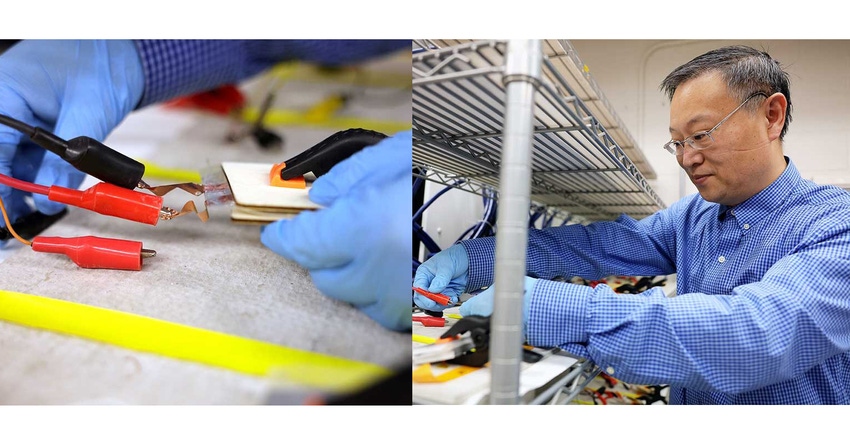Machine Learning Cuts EV Battery Testing Time by 75%
University of Michigan-developed algorithm shortens arduous trial and error to speed battery design.
August 11, 2022

Leaders around the world are betting on EVs as the automobiles of the future, a move that has spurred scientists to ratchet up research and development into how to optimize the batteries on which they run.
To help facilitate one aspect of this research—EV battery design—researchers at the University of Michigan have developed a framework that they said can dramatically reduce the cost of assessing how EV batteries will perform over the long haul.
A team led by Wei Lu, U-M professor of mechanical engineering, developed a streamlined approach to predicting how a battery will perform and how long it can last that makes the typically time-consuming process four times faster, he said.
“The goal is to design a better battery and, traditionally, the industry has tried to do that using trial-and error-testing,” Lu said in a press statement. “It takes such a long time to evaluate.”
Improving the Current Design System
Scientists must consider a balance a range of materials and factors when creating an EV battery, with various parameters such as electrode thickness, material weight, and the size of the particles in the electrode, among others.
It typically takes several months of fully charging and discharging a battery 1,000 times to simulate 10 years of use to test EV battery configurations. Naturally, this process is arduous and makes EV battery innovation move at a slower than the pace that researchers would prefer to advance.
The optimization system developed by Lu’s team could cut the time for both simulation and physical testing of new and better batteries by about 75%, researchers said. Moreover, it automatically generates better designs, he said.
This combination of speed and improvement could provide a major boost to battery developers searching for the right configurations to develop batteries that last longer and can go a further distance on one charge, Lu said. The latter is one of the chief concerns for consumers considering EV purchases, he said.
“By significantly reducing the testing time, we hope our system can help speed up the development of better batteries, accelerate the adoption or certification of batteries for various applications, and expedite the quantification of model parameters for battery management systems,” Lu said in a press statement.
How It Works
The optimization system uses machine learning to analyze early feedback on battery configurations so it can discard unpromising ones rather than cycling them till the end, Lu explained. The system knows both when to quit and how to get better as it goes.
“This is not a simple task, since a battery configuration performing mediocrely during early cycles may do well later on, or vice versa,” he acknowledged.
The system uses the mathematical techniques known as Asynchronous Successive Halving Algorithm and Hyperband to know when to stop cycling tests that don’t get off to promising starts. Meanwhile, it takes data from previous tests and suggests new sets of parameters to investigate using Tree of Parzen Estimators.
Both tactics help save resources as well as time, Lu explained. “We have formulated the early-stopping process systematically and enabled the system to learn from the accumulated data to yield new promising configurations,” he said.
Applying the Method
Researchers published a paper on their work, was funded by LG Energy Solution, in the Cell Press journal Patterns.
Though EV batteries are a top concern that can benefit from the optimization framework, it also can test designs of all battery types--from those used for decades to run internal combustion automobiles, to the smaller devices that power watches and mobile phones, researchers said.
“This framework can be tuned to be more efficient when a performance prediction model is incorporated,” observed Changyu Deng, a University of Michigan doctoral student in mechanical engineering who worked on the project.
Researchers hope the framework will be used by scientists to “inspire improved methods that lead us to optimal batteries to make better EVs and other life-improving devices,” he added.
Elizabeth Montalbano is a freelance writer who has written about technology and culture for more than 20 years. She has lived and worked as a professional journalist in Phoenix, San Francisco and New York City. In her free time she enjoys surfing, traveling, music, yoga and cooking. She currently resides in a village on the southwest coast of Portugal.
About the Author(s)
You May Also Like





